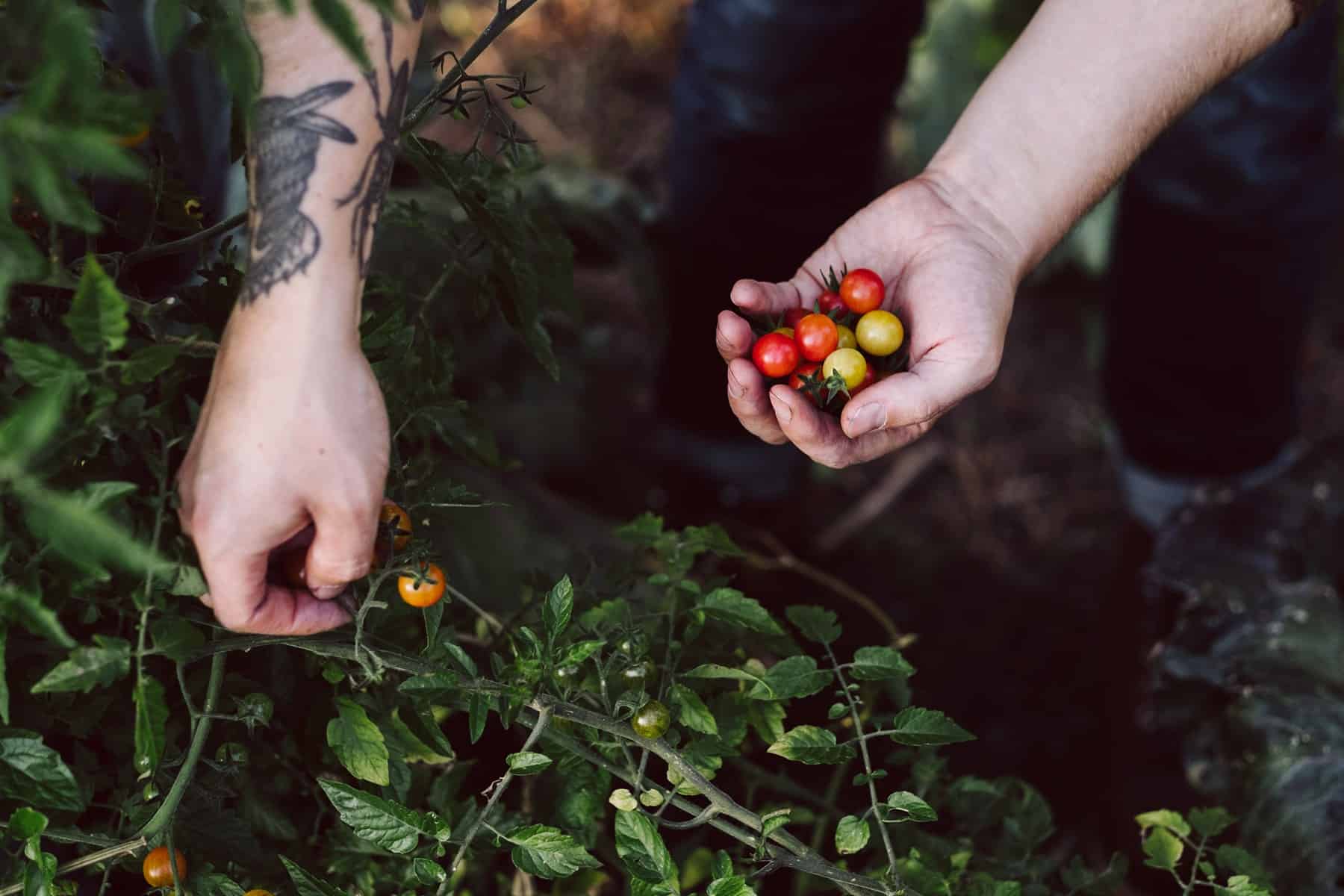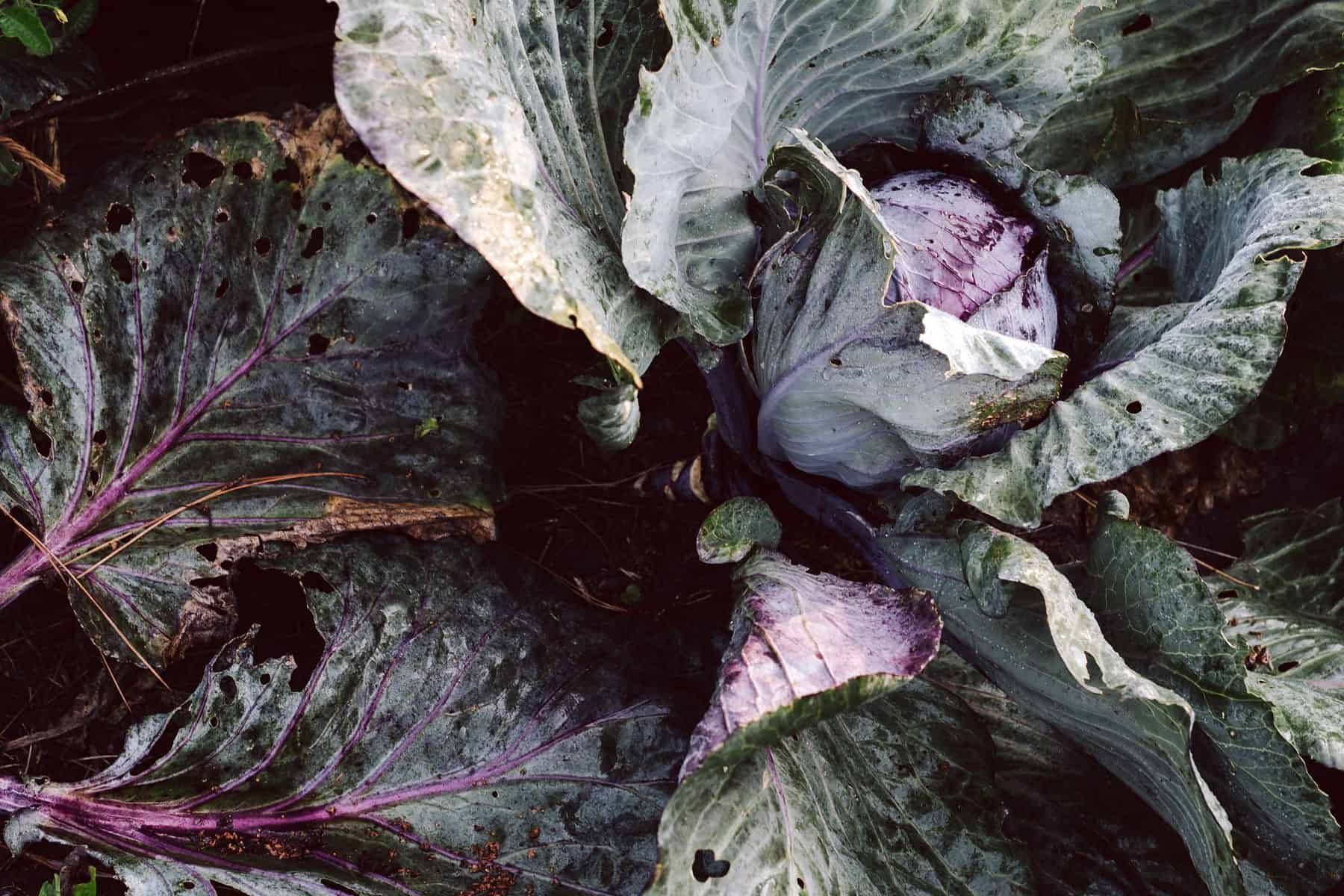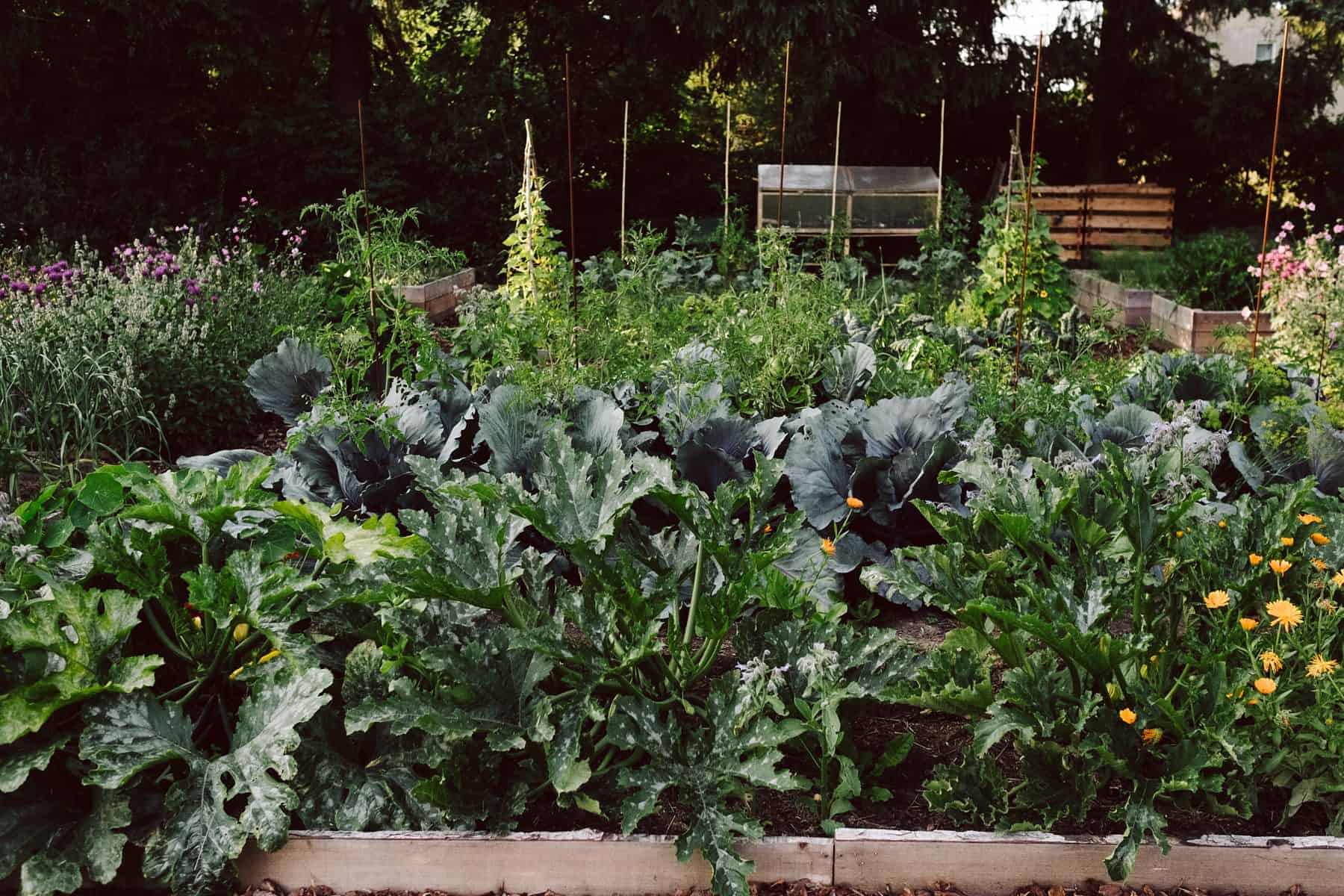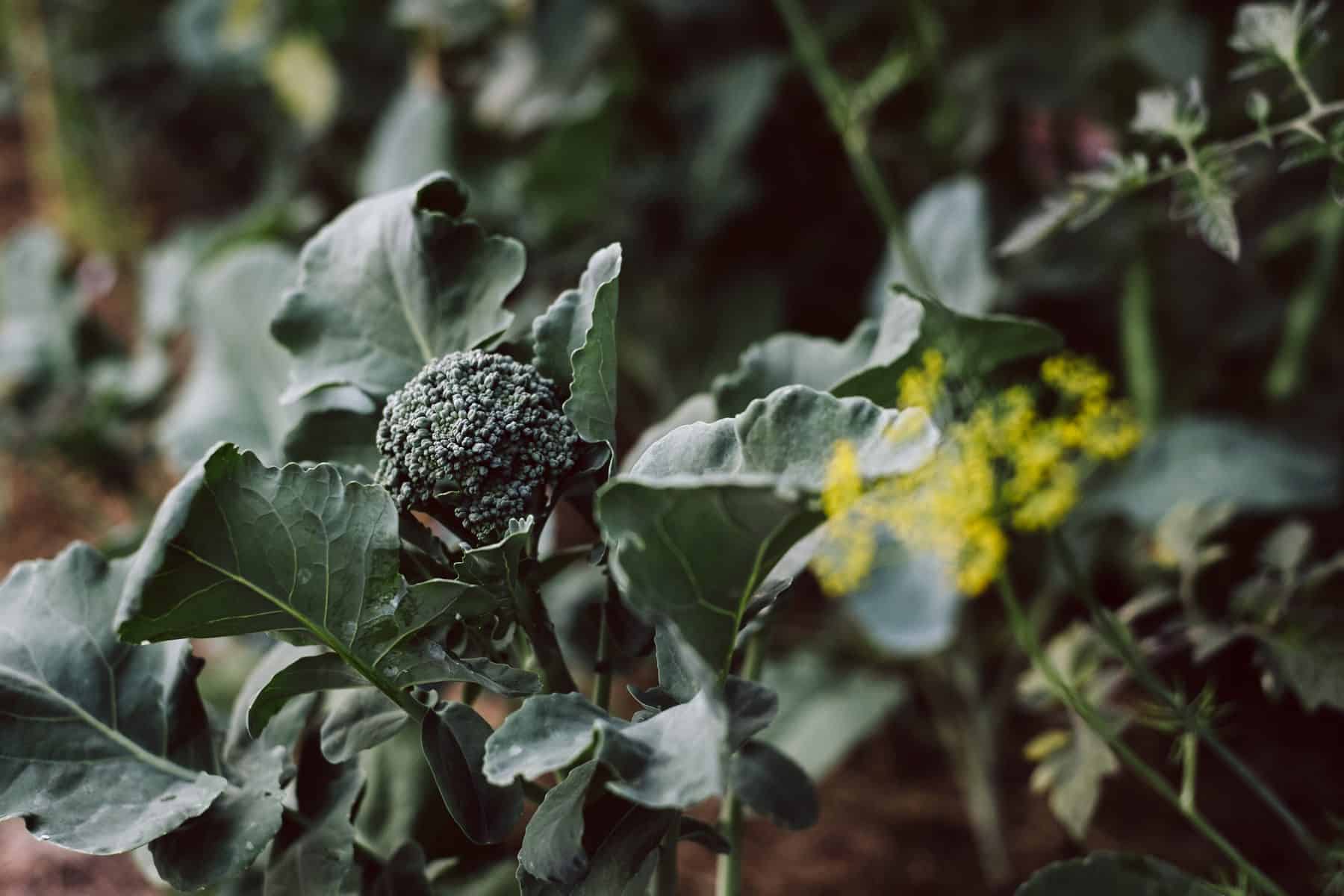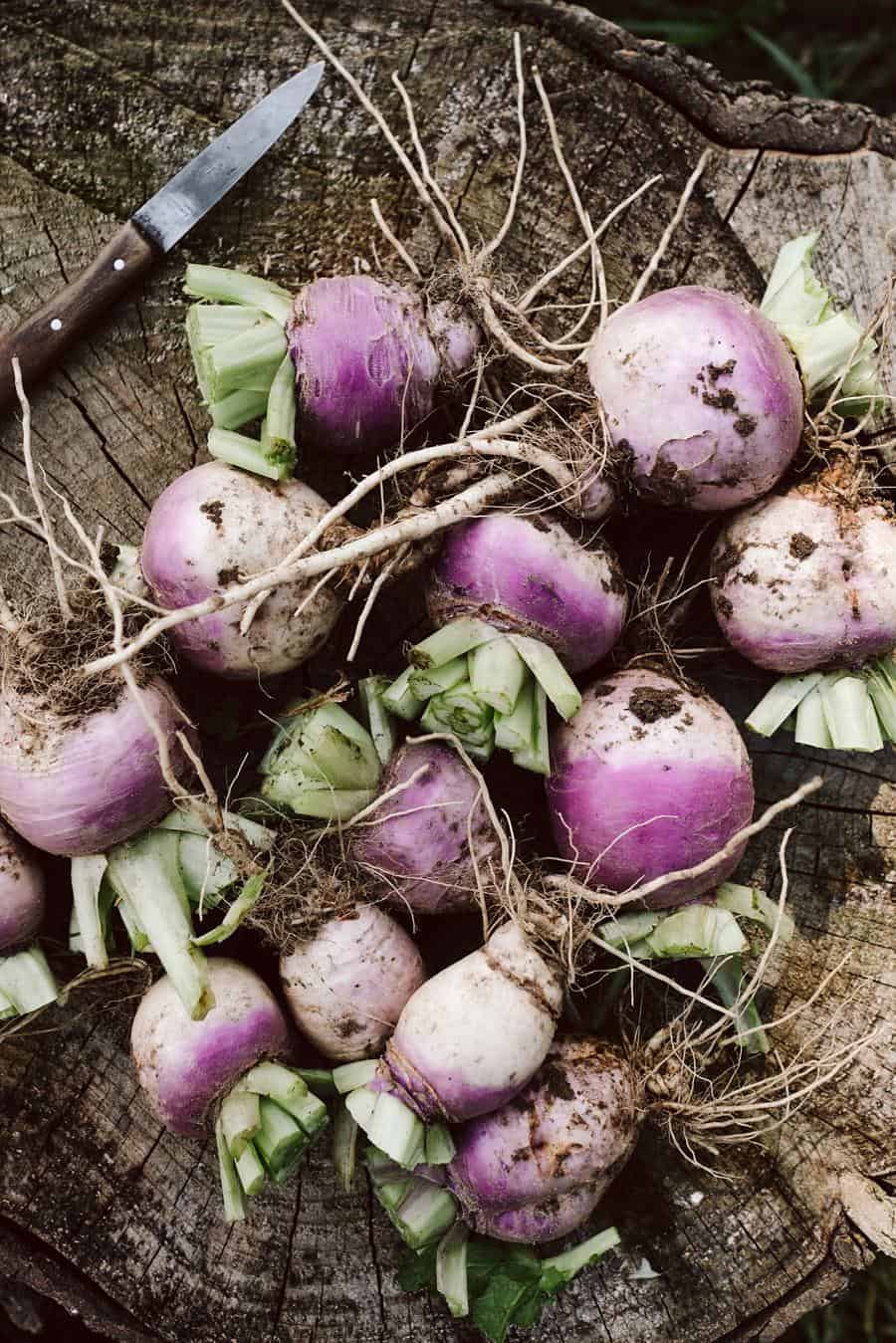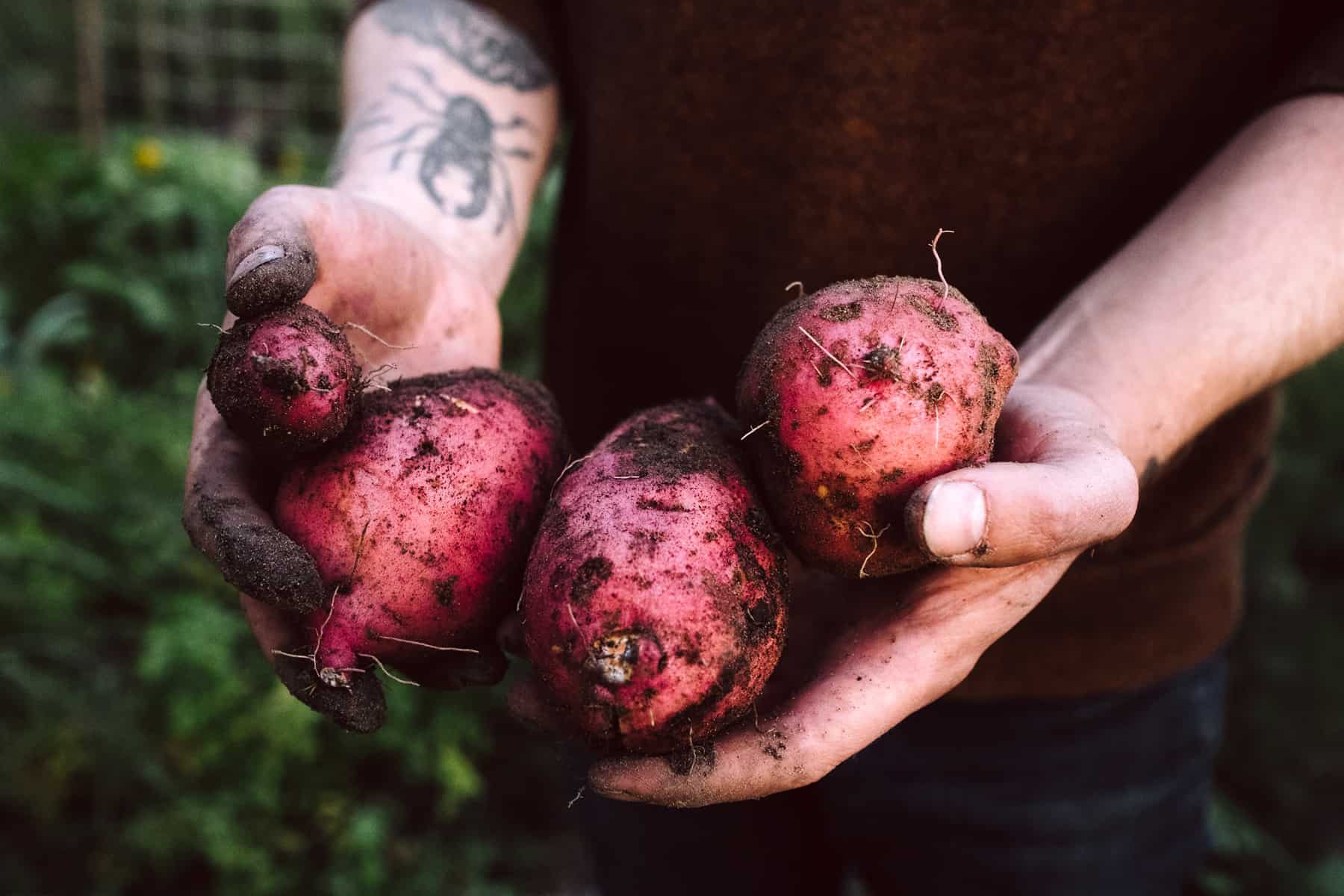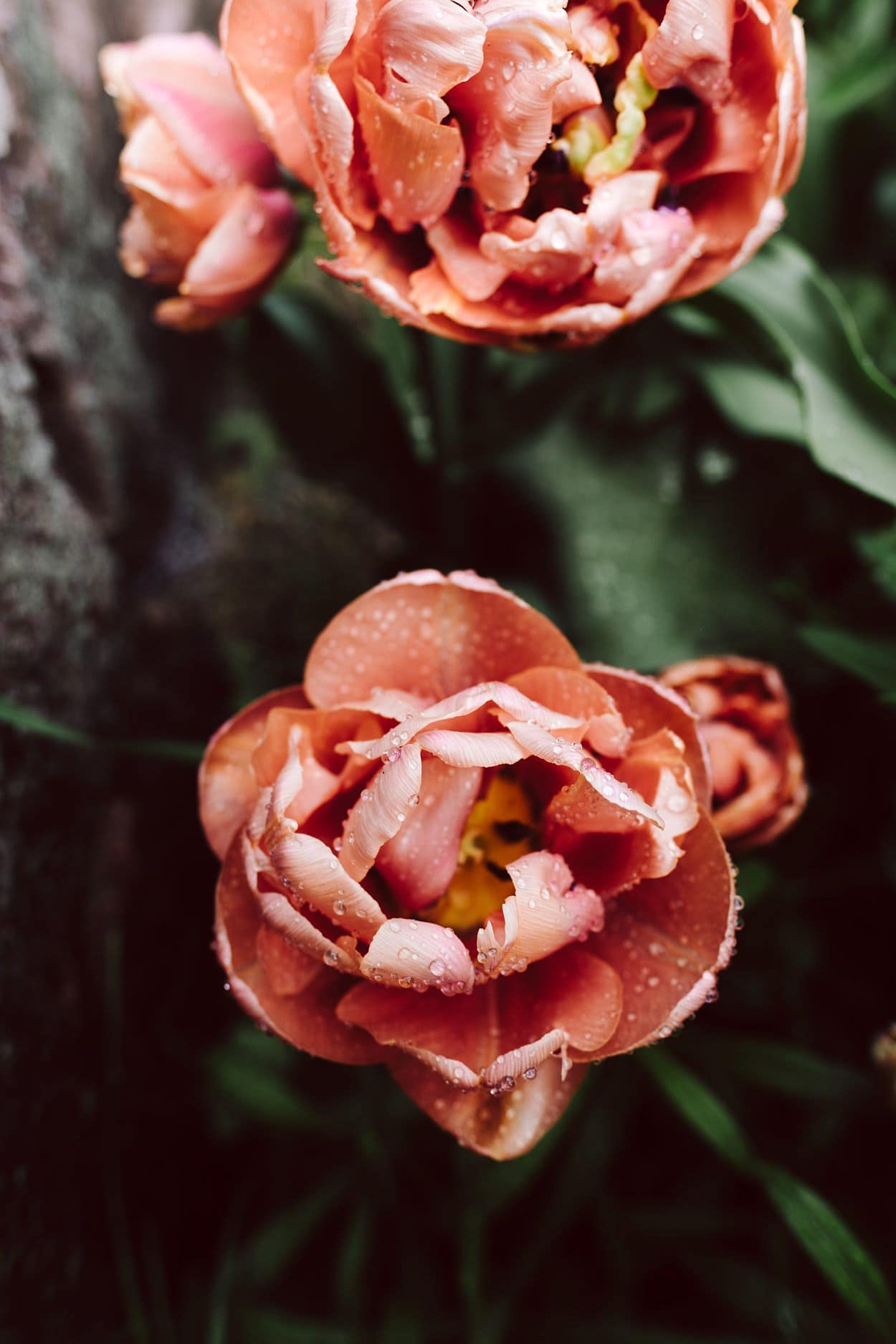
But that is part of it and has to be taken into account. Unfortunately we won’t make ends meet with our own potatoes for long. (We love potatoes and also like to eat several kilos in one week). But that is not our goal at the moment. Then we would probably already decide differently when choosing the seeds or the seed potatoes. We choose the varieties we want to plant according to taste and, for our work as food photographers, also according to appearance. They should offer us an enrichment to the commercial assortment. We are not interested in selecting the most productive potato or carrot that will bring us through the winter. Variety is more important to us than yield. So this year we ended up with more than 100 different vegetable varieties.
The usable area of 200 square metres, plus potato fields, strawberry fields, fruit trees and berry bushes, which we currently cultivate, would in any case be sufficient for the self-sufficiency of two people over the year. However, we would have to organise ourselves much better in order to harvest regularly over a long period of time. This requires experience, but also a certain routine, which we simply still lack in the second garden year. Even though everything is growing splendidly here and we are incredibly satisfied with our harvest, we must not forget that we are only at the very beginning. Trying out and learning new things is a not to be sneezed at part of gardening. Again and again we research, read, implement ideas that are either directly successful or not. Then we have to start all over again. All this is a lot of fun for us, but it also requires time, which you have to invest. The active work in the garden, on the other hand, hasn’t been so time-consuming in recent weeks. We do not have a time clock and can therefore only estimate. On average, we walked through the beds twice a week and did what we noticed: tying up an open-air tomato, piling up the leeks, sowing, removing overbearing weeds, adding mulch, fertilizing with liquid manure or similar. From the end of June, when the majority of the young plants had grown in the ground and so far that they no longer needed so much care and attention, we were not busy for more than one or two hours a week in the vegetable garden. So the effort is absolutely within limits. If you grow in mixed cultivation, you have less to fight with pests, because of a thick mulch layer only few weeds prevail, you are not so busy with watering and you do not have to loosen the soil between the plants. With simple means we save a lot of work, which is often not conducive to a healthy soil life.
The garden season is slowly coming to an end. The first tomato plants in the greenhouse are harvested, the berries produce their last fruits, the potatoes are all from the ground and the walnuts fall from the tree. Looking back on the last few months, we cannot really grasp how many full harvest baskets we carried into the kitchen. Since June we have been able to harvest the fruits of our hard work in spring, when we completely replanted our kitchen garden. Now red and white cabbage, broccoli, black cabbage, beans, leeks, celery, Jerusalem artichokes, sweet potatoes, courgettes, pumpkins, tomatoes, eggplants, peppers, cucumbers, a few other varieties and lots of herbs are still growing in the garden. So we will be able to supply ourselves with the fresh harvest and our stored and preserved food for a few more weeks. It feels so good to be able to cook with what we’ve grown ourselves. We know exactly what is involved, namely only nature. But we also know how much work and what resources we have spent to grow the vegetables. When the basis of life, food, comes from our own garden, this not only gives an enormous appreciation and a direct reference to what lands on the plate, but also an unbelievable satisfaction.
However, we cannot currently imagine being completely self-sufficient all year round. At this point it might make sense to briefly explain the term, the possible gradations and our view on it. Self-sufficiency refers to an autonomous life in all areas. One creates one’s basis of life by producing one’s own food, but also other necessary products such as clothing, medicine, etc. When we speak of complete self-sufficiency, we are personally concerned with the cultivation of food. Fruit and vegetables, nuts and seeds, but also staple foods such as cereals and potatoes, own production of oil, seasonings and, if necessary, animal products such as eggs. The fact that one of us sits at the spinning wheel in the evening and carves the other wooden plate could be quite funny for a change. As a daily routine this way of living is far away.
We are often asked whether we can make a living from growing our own vegetables. The answer is quite clear: no. Many of us, and we include ourselves in this, are not even aware of the quantities of food we consume each year. The per capita consumption of potatoes alone is just under 60 kilograms. This is probably just the total amount of potatoes we were able to harvest this year from about 100 cut potatoes on 8 x 8 metres of bedding. It is estimated that we had to share half of the harvest with the voles.

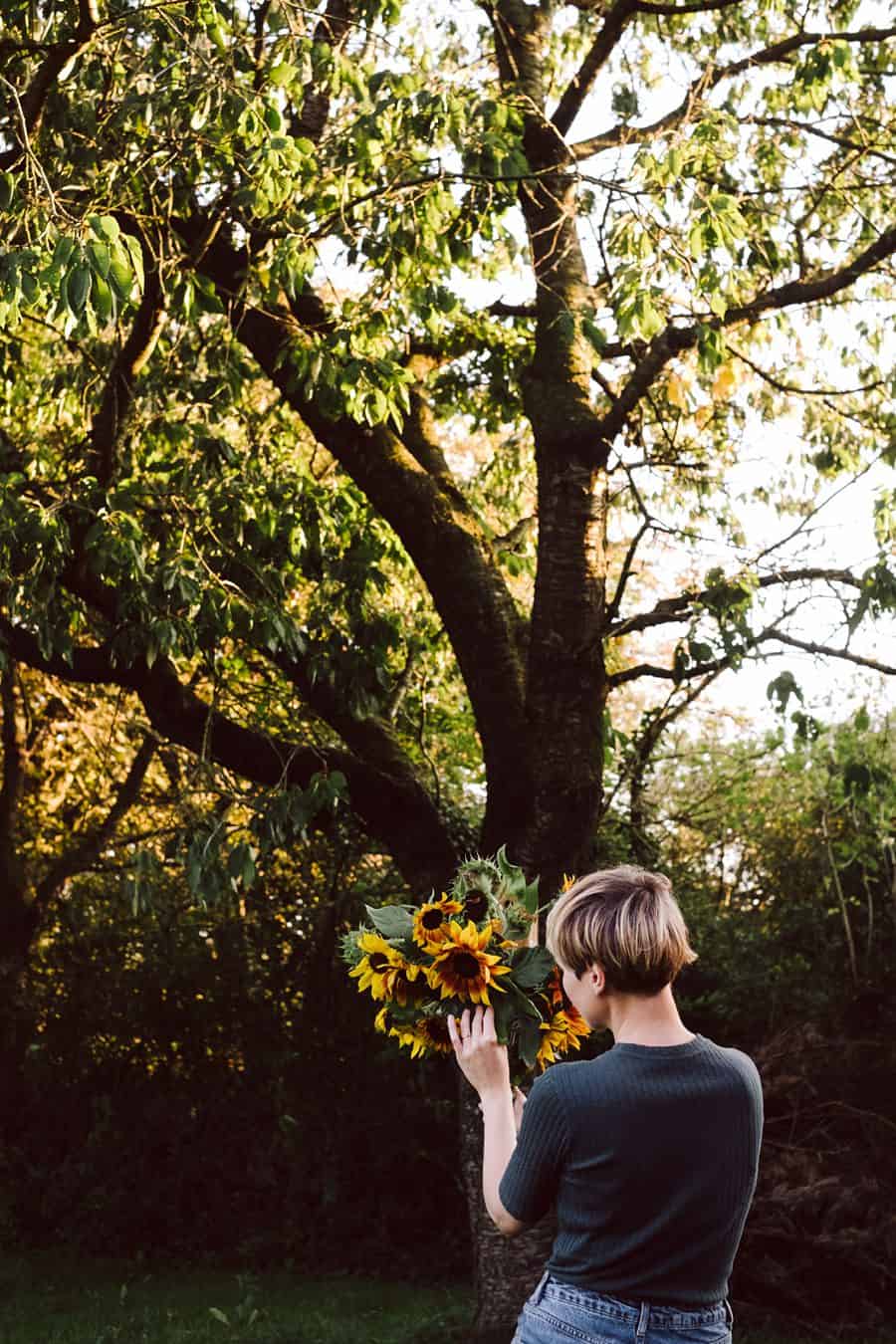
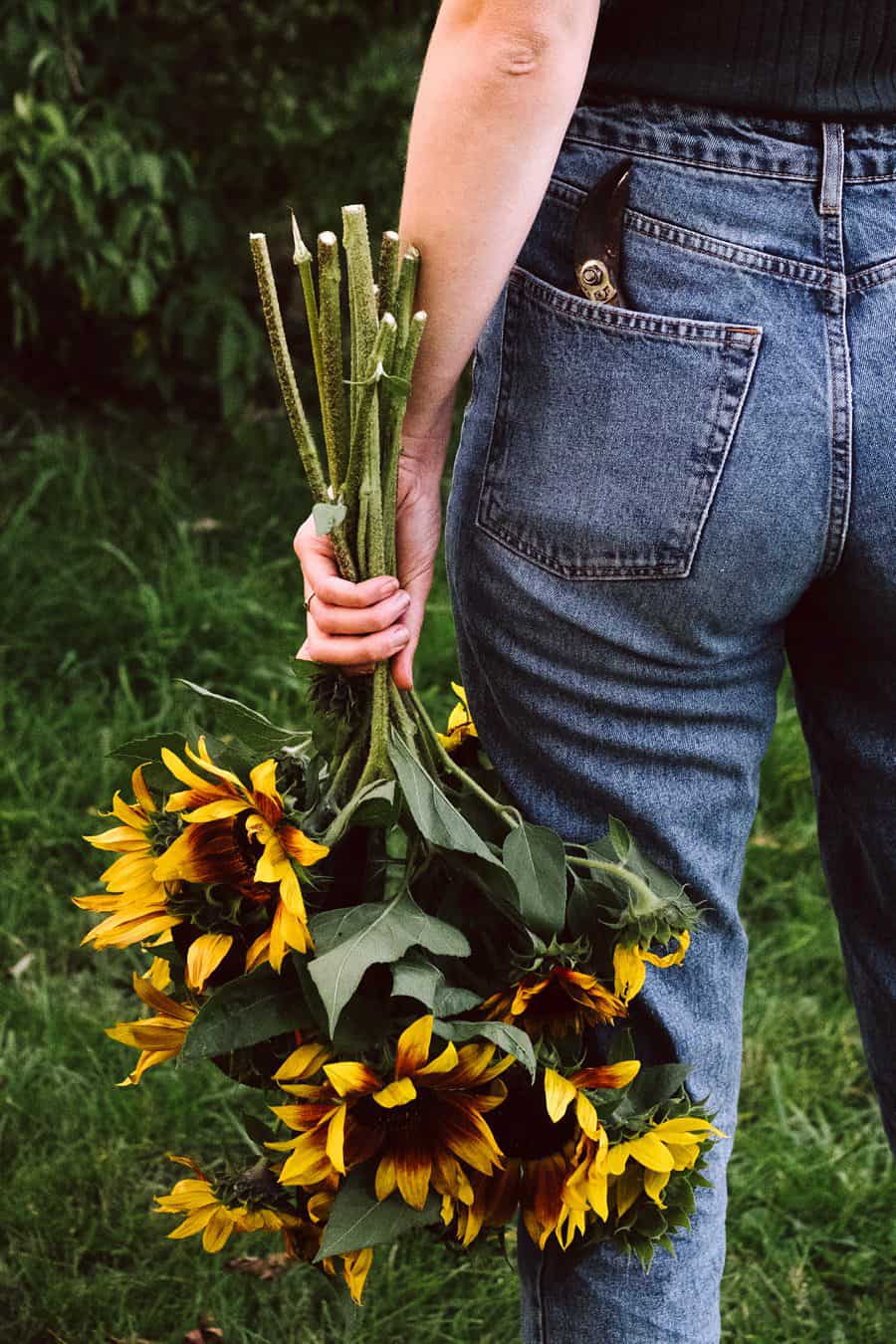
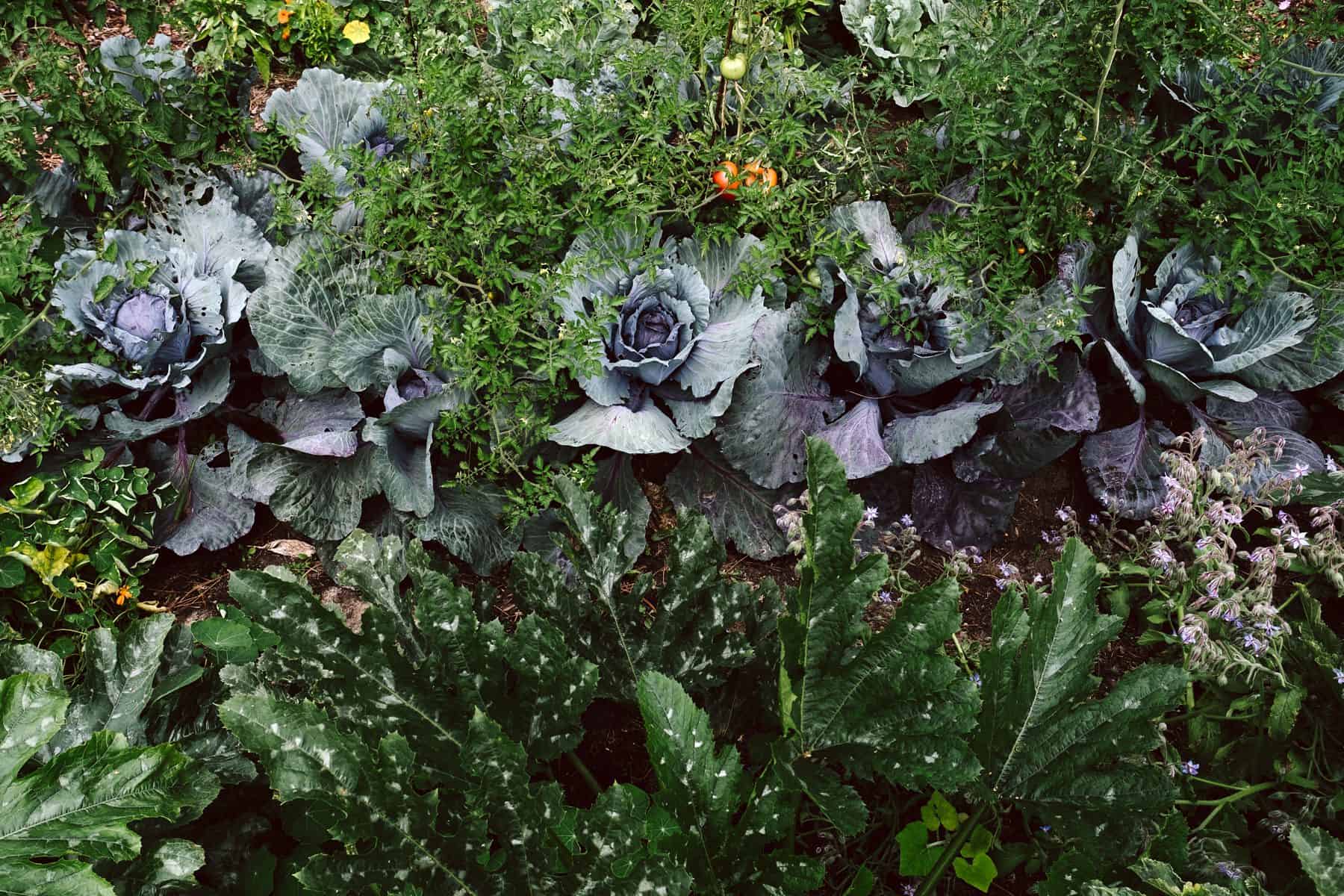



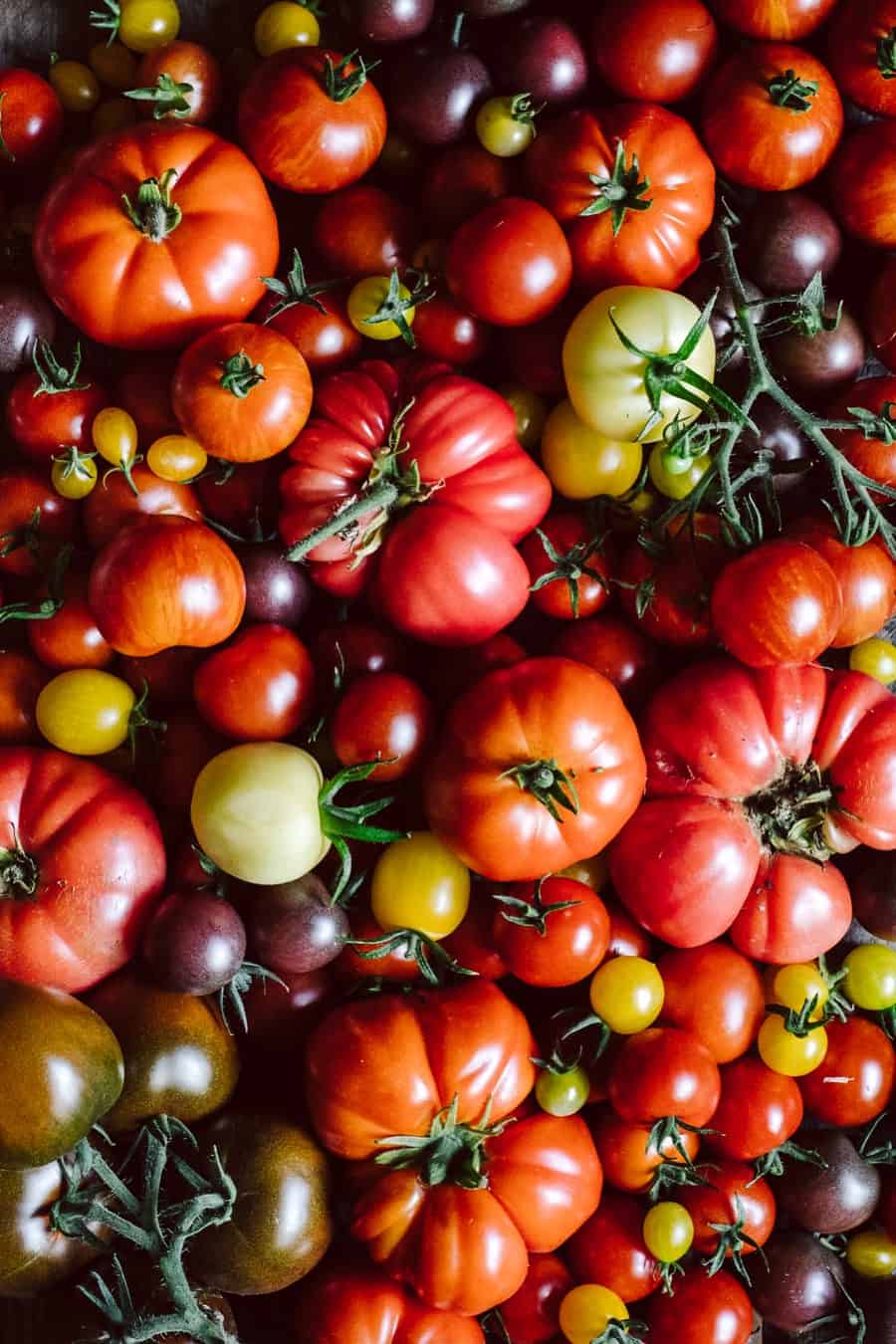
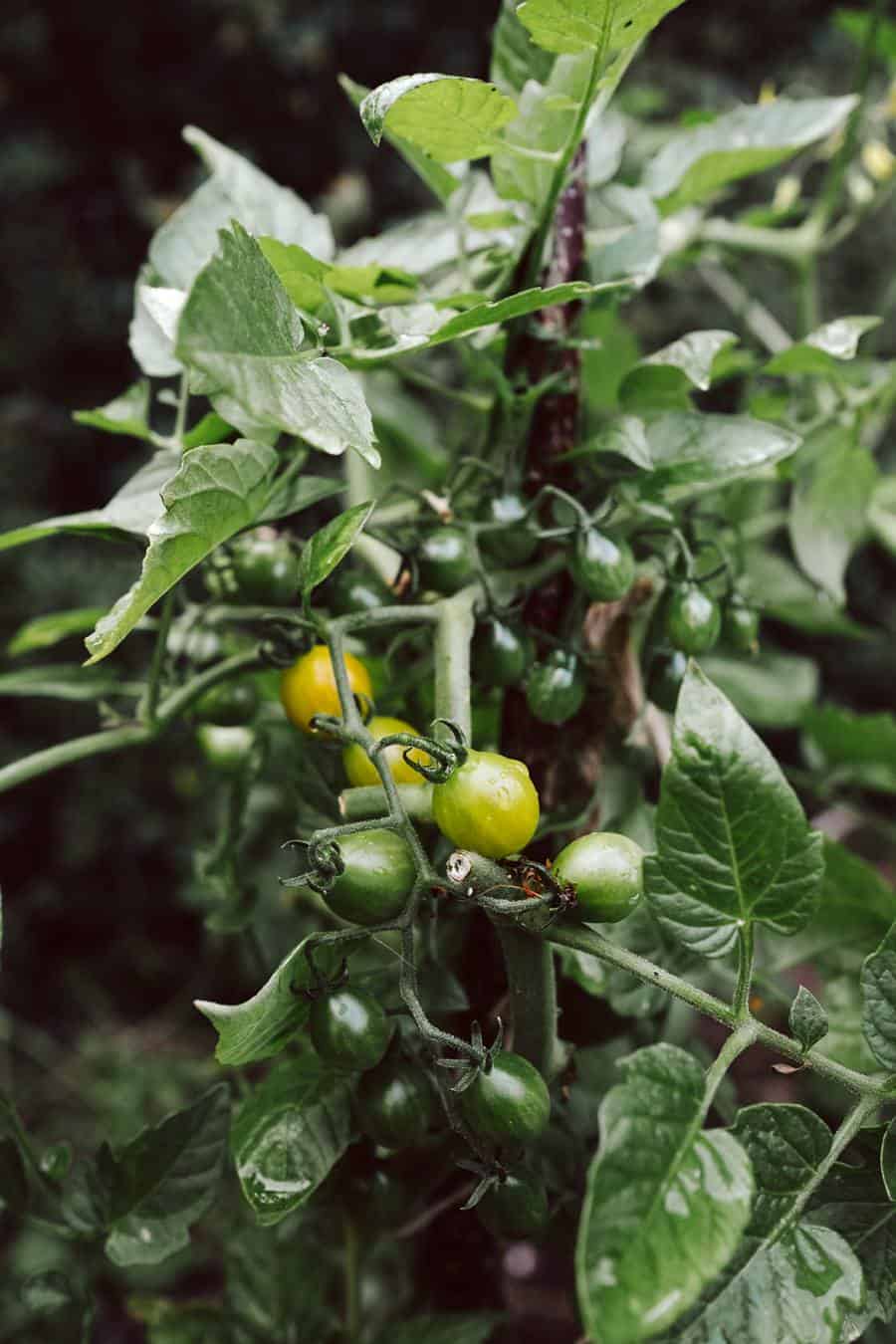




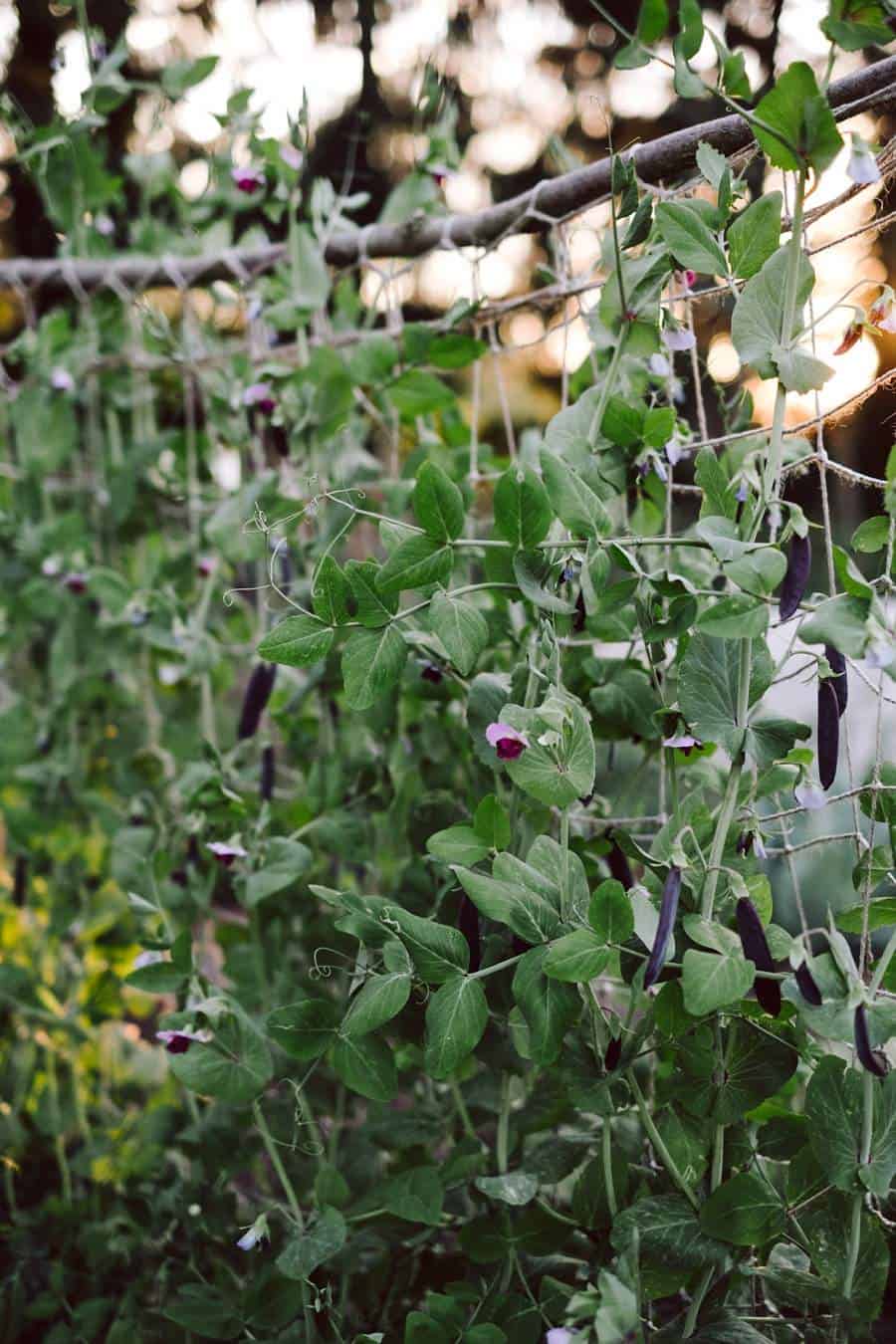

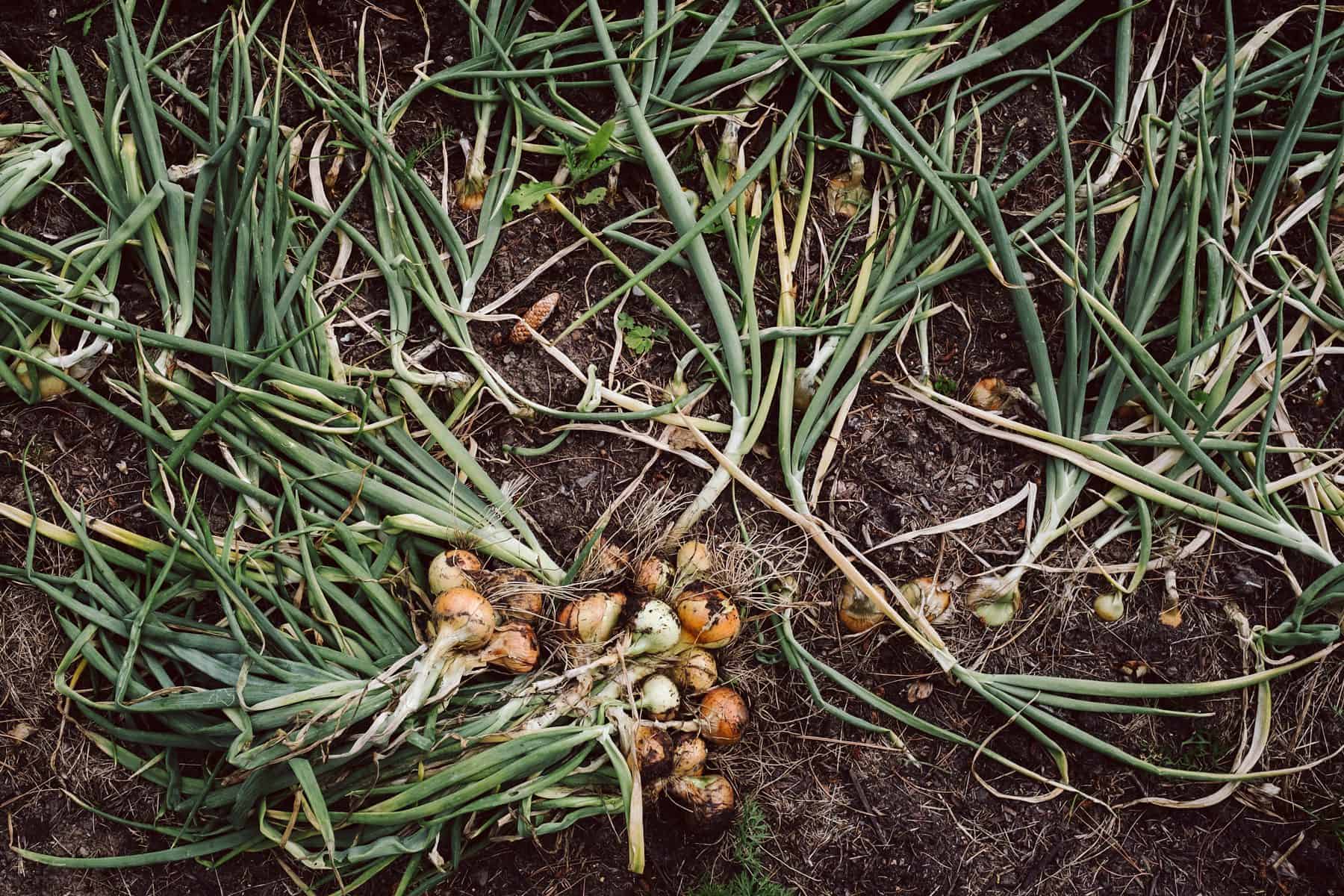
There is no right or wrong, better or worse, somehow every technique fulfills its purpose. In order to process the large quantities, we have, for example, purchased a large dehydrating device but also, already last year, built multi-storey sieves on which we can dry walnuts, among other things. Crates for storage had to be brought in, an external second refrigerator, in which the enzymes are put after a few weeks, as we have no cellar. But in the long run we need more storage space. Be it just an earth rent or maybe even a small earth cellar. All this occupies us now in our spare time.
We think that vegan self-sufficiency, throughout the year, can also be possible with relatively little effort. However, only when you are 100% familiar with the system, have found a functioning system for yourself and, above all, when you have gained a lot of experience and understand the processes in nature. It will probably take years until that is the case.
The fact that we can already provide for ourselves over a relatively long period of time is not necessarily due to a green thumb, our thirst for action and knowledge, but also to the fact that there were already some treasures on our property. An important basis for self-sufficiency are perennial crops such as trees or berry bushes, for example. In our garden there is a huge walnut tree, four cherry trees, four apple trees and a plum tree. Even if they are not all in their best years and some of them carry only little, we are very grateful not to start from scratch and to have to wait years until we can harvest anything from newly planted trees. Grapes, black, white and red currants, elderberries and raspberries have already grown here. Even meadow mushrooms are currently sprouting in large quantities from the soil. All these plants offer a maximum yield with a minimum of effort. For this reason, we would like to plant even more perennial plants in the garden and have therefore decided on our edible perennials. They form a renewable basis of herbs, which we can fall back on again and again. The same applies to perennial crops such as strawberries, rhubarb, artichokes and asparagus. Once planted, you will enjoy it for many years at best.
We are working to build a system that is as sustainable as possible, with a stock of plants, a wealth of knowledge, experience and routine, so that it is easier for us from year to year to extend the period of our self-sufficiency. Always with the premise that it must be fun for us and enrich our lives.
An exclusive self-sufficiency with fruit and vegetables from our own garden we can only cover this season, or at least, for about 4 months. During this period we harvest not only for our daily needs, but also large quantities that have to be processed first. The amount of work involved should not be underestimated.
Many glasses are already piled up with supplies for the winter: Preserved, fermented, dried, boiled and pickled. Of the almost 60 kilograms of tomatoes harvested so far, a good half were boiled down to tomato sauce. In the end there are still only a dozen bottles, which are incredibly delicious, but will certainly not last until the next season, not even into the next year.
As expected, the apple harvest was worse this year. After a record harvest last year, the trees first had to recover. Nevertheless, we brought more than 100 kilograms of apples to the organic moster and processed another 20 kilograms into apple sauce and stewed apples. The (small) harvest alone and the trip to the moster took almost a whole day. Picking apples, sorting them, packing them for transport, repacking them in the cider factory. Another day was spent processing the remaining apples. How many days would one spend washing, peeling, cutting, cooking, filling apples into sterile glasses and drying the skins in order to get the supplies over the year? And that’s not all, because of course we want a colourful pantry in which the apples make up only a small fraction. Here the romantic country life, in which you wander dreamily through the blooming garden, pick something here and there and put it in your mouth, quickly becomes a full-time job.
Since we have been eating seasonally for many years anyway, we knew at least what would be on our menu at what time, how we could process and preserve the food. That was not a big change for us. Nothing has changed in our diet. We grow so many different varieties that we don’t have to do without anything. Quite the opposite! In our garden we grow wonderful vegetables, which you can rarely find at selected organic weekly markets, but never in the supermarket. A conversion and an underestimated time factor for us was actually the processing in large quantities. This requires not only the necessary know-how but also various utensils which have to be purchased. A large preserving pot, a selection of preserving jars for the various purposes. Iron-on, twist-off or alarm jars.
